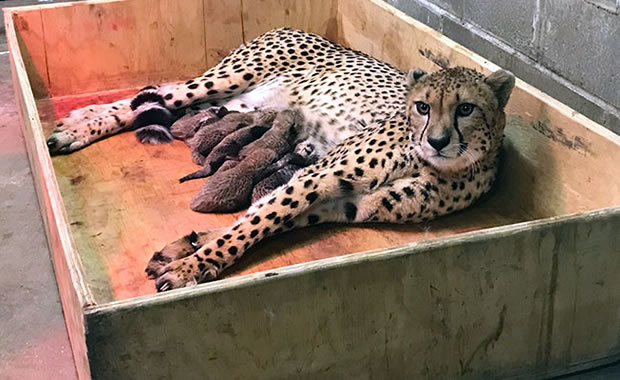

Mexican Bobcat
|
Creature Profile
The Mexican bobcat is a subspecies of the bobcat and is found in Central Mexico. It is often confused with the lynx since it is very similar in appearance, but the tail is darker on the top than that of the lynx. It is a medium-sized cat with a ruff of fur around the sides of the face, giving the appearance of sideburns. Adults can grow twice as large as house cats, reaching over four feet long and weighing between 13 an 30 lbs. Coat coloration varies from light gray to reddish-brown. Their coats are also covered with more spots than bobcats of the north, but they tend to be much smaller. The bobcat gets its name from its tail that is noticeably smaller than other cats.
The Mexican bobcat can be found in a variety of habitats, including boreal and coniferous mixed forests, coastal swamps, deserts, and scrubland. They are known to sleep in hollow trees, hidden dens, thickets, or rocky crevices. They are solitary and nocturnal and rarely seen by humans. They are also opportunistic feeders and will eat almost anything, including rabbits, rodents, small mammals such as beavers and peccaries, reptiles, birds, bats, and even deer. Mexican bobcats only come together during breeding season, and females give birth to two to three young after a gestation period of 50 to 70 days. The male does not care for the young after they are born.
The bobcat was once the most heavily harvested and traded members of the cat family. They were once heavily hunted for their pelts until it was made illegal. Today threats include habitat loss due to growing human populations. And although hunting is illegal, over 40,000 are still being killed illegally. Many bobcats are found in zoos. This species was placed on the endangered species list in June of 1976.
Wikipedia Article

|
Wikipedia Article Copyright Notice: This article is licensed under the GNU Free Documentation License. It uses material from the Wikipedia article "Mexican bobcat". |
May 8, 2017
Glenn, C. R. 2006. "Earth's Endangered Creatures - Mexican Bobcat Facts" (Online). Accessed 5/9/2024 at http://earthsendangered.com/profile.asp?sp=39&ID=9.
Need more Mexican Bobcat facts?




